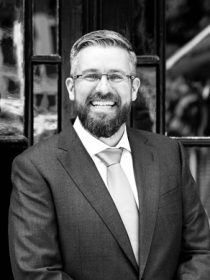prof. dr. L.V.E. (Léon) Koopmans
Hoogleraar op het Kapteyn Instituut

Telefoon:
050 36 34073 (Secretariaat)
E-mail:
l.v.e.koopmans rug.nl
21-cm Cosmology:
The CoDEX ERC program
-
LOFAR EoR KSP: I'm PI of a key project on the Low-Frequency Array that aims to be the first to detect and quantify neutral hydrogen in the first one billion years of the Universe to study early star and galaxy formation. [PI]
-
AARTFAAC Cosmic Explorer (ACE): I lead a ~500-hour program with AARTFAAC to set limits on the 21-cm signal of neutral hydrogen from the Cosmic Dawn [PI].
-
NCLE/Chang'e4: I'm part of the science team of the Netherlands-China Low-Frequency Explorer NCLE instrument on board the relay satellite for the Chinese Chang'e4 lunar mission. [Dutch Science co-PI]
-
NenuFar: I am leading a project to target the 21-cm neutral hydrogen signal from the Cosmic Dawn with the French NenuFar radio-interferometer, the most sensitive low-frequency array in the world on angular scales of arcminutes to degrees. [PI]
-
SKA EoR/CD Science Team/SWG: I'm deeply involved in helping to design the next-generation global Square Kilometre Array radio telescope SKA (LOW in particular) for direct tomographic observations of neutral hydrogen only a few hundred million years after the Big Bang, as well as prepare for one of its primary key science projects [Founding Chair].
-
Astronomical Lunar Observatory (ALO): I am the science PI of ALO, a low-frequency radio telescope concept at the back-side of the moon, currently in pre-phase A.
Gravitational Lensing:
-
Euclid Strong Lensing SWG: I work with the Euclid Strong-Lensing working group to develop tools to find and model new strong gravitational lens systems that ESA's Euclid satellite (2020+) will discover. [Science Team]
-
KiDS/VIKING: A new project to find strong gravitational lenses in the VST-KiDS survey as a test bed and preparation for Euclid. [PI]
-
SHARP: High-resolution follow-up of strong gravitational, using laser guide star adaptive optics with Keck, HST, VLBI and ALMA. The goals are to constrain, e.g. dark-matter substructure in galaxies. [Founding member]
-
SLACS: The largest strong gravitational lensing survey to date, discovering ~150 lens systems from the SDSS with follow-up using HST, Keck, VLT, etc. The project involved the development of state-of-the-art lensing and dynamical modelling codes. Goals are the study of galaxy structure and evolution of massive early-type galaxies. [PI]
-
TDCOSMO/H0LiCOW: A program to measure the Universe's expansion rate, recently showing a tension between early and late Universe measurements of the Hubble Constant, potentially due to a breakdown of the standard cosmological model. [Founding member]
| Laatst gewijzigd: | 08 oktober 2023 21:34 |
